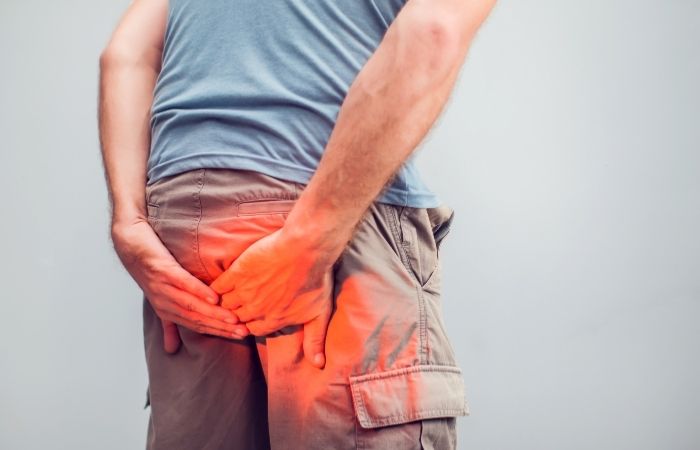Quick Answer: Lube helps prevent STD transmission by reducing microtears and condom breakage, but some lubes (especially flavored, oil-based, or high-osmolality ones) can damage tissue or increase infection risk. Choosing the right kind is crucial for safe sex.
Case Study: “The Lube Felt Great, Until It Didn’t”
Maya, 27, had been using a popular flavored lube she picked up at a sex shop. It tasted good, made things fun, and seemed to check all the boxes. But a few hours after sex, she noticed burning and irritation that didn’t go away. A week later, she was diagnosed with a Yeast Infection and Bacterial Vaginosis, caused by pH imbalance and mucosal irritation.
“I didn’t think to check the ingredients. I just assumed if it was sold in stores, it had to be safe.”
Maya’s story isn’t rare. According to the Journal of Sexual Medicine, many commercial lubricants, especially those with high osmolality or added sugars, can disrupt the vagina’s natural flora and damage epithelial tissue, making it more vulnerable to STIs.
The lesson? Just because it smells like strawberries doesn’t mean it’s safe for your body.

People are also reading: Pregnancy and Trichomoniasis: What OBs Wish Partners Knew
Lube’s Superpower: Reducing Friction and Microtears
Let’s start with the good: lube is protective when used correctly. Whether you’re having vaginal, anal, or oral sex, adding a safe, body-friendly lubricant reduces the risk of:
- Microtears: Tiny, invisible tears that create pathways for viruses like HIV and Herpes
- Condom breakage: Friction can weaken latex and cause tearing mid-use
- Discomfort or abrasion: Which can lead to inflammation and higher susceptibility to infection
The CDC, Planned Parenthood, and sexual health educators across the board recommend water- or silicone-based lubes for partnered sex. Especially during anal sex, lube isn’t just fun, it’s a safety essential.
But here’s where things get risky: not all lubes protect. Some actively harm.
The Quiet Villains: Glycerin, Sugar, and Osmolality
Read your lube label lately? You should. Ingredients like glycerin, parabens, and propylene glycol may sound harmless, but for many bodies, especially vaginal and rectal tissues, they’re irritating, drying, and destabilizing.
Worse still, many flavored or “warming” lubes contain sugars or irritants that can throw off pH balance and cause infection. Even some well-known “natural” brands have been flagged for high osmolality, meaning they pull moisture out of your cells, damaging mucous membranes and making it easier for STDs to get through.
One NIH study found that hyperosmolar lubes increased the risk of tissue damage during both vaginal and anal sex. The more damage, the higher the likelihood of transmission, especially for HIV and Syphilis.
If that sounds alarming, don’t panic. The solution is simple: choose low-osmolality, body-safe lubes. Look for ones labeled “iso-osmolar,” “paraben-free,” or designed for medical-grade or sensitive use.
Oil-Based Lubes: Why They’re a No-Go With Condoms
Using coconut oil? Baby oil? Vaseline? They may feel silky and natural, but they’re a hard no if you're using condoms. Oil-based lubricants degrade latex and polyurethane, causing microscopic tears or full-blown breakage during sex.
Even worse, oils are comedogenic and can trap bacteria, increasing the risk of Bacterial Vaginosis, yeast infections, and rectal inflammation. According to the Mayo Clinic, oil-based lubes should never be used with condoms, even in a pinch.
Anal Sex Without Lube? Don’t Even Think About It
Anal tissue doesn’t self-lubricate. That means without added lube, you're risking serious damage. Friction without lubrication can cause microtears in the rectum, tiny breaks in the skin that allow viruses like HIV, Hepatitis B, and Syphilis to enter the bloodstream more easily.
Anal sex without lube isn’t just uncomfortable, it’s dangerous. Prioritize protection every time. Better yet, make it part of your regular prep: test, talk, and lube up.
Can Lube Prevent STDs? It Depends on the Formula
This is the myth that needs the most unpacking. No lube can outright prevent an STD. But the right lube can help reduce risk by minimizing skin trauma, improving condom performance, and protecting delicate tissues from tearing. The wrong lube, however, can do the opposite, exposing you to more risk, not less.
Here’s a simple rule of thumb:
- Helps Reduce STD Risk: Water-based, silicone-based, low-osmolality, glycerin-free
- May Increase STD Risk: Flavored lubes, sugar-based lubes, oil-based lubes, high-osmolality formulas
Using the wrong lube isn’t a moral failing, it’s a knowledge gap. Most packaging doesn’t warn you about mucosal harm or pH disruption. That’s why it’s on us to read beyond the branding and learn what our bodies actually need.
Want peace of mind after your last hookup? The Combo Test Kit screens for multiple STDs and ships discreetly to your door.

People are also reading: STI Vaccines: What Exists, What’s Coming, and What’s Stalled
How to Choose a Body-Safe Lube
Shopping for lube shouldn’t feel like chemistry class, but the wrong ingredient list can seriously impact your sexual health. Here’s what to look for when choosing a lube that supports both pleasure and protection:
- Check for “Condom Compatible” labels: If it doesn’t say it, don’t assume it is.
- Avoid sugar, glycerin, and parabens: These ingredients can disrupt pH and cause irritation.
- Prioritize low-osmolality or iso-osmolar formulas: These preserve mucosal integrity and reduce infection risk.
- Look for “pH balanced” or “sensitive skin safe” products: Especially important for vaginal use.
- Read user reviews: Real feedback often reveals things the label doesn’t, like burning, dryness, or allergic reactions.
No lube works for everyone. It’s okay to try a few before finding what feels right.
Need a lube that plays nice with your sexual health plan? Start by matching it with your protection method, condoms, toys, or solo play, and check ingredient safety just like you would with skincare.
Symptoms That Might Be Lube-Related
If something feels off after sex, don’t ignore it. Many people experience symptoms from lube that mimic STDs or infections. Here are a few red flags:
- Burning or stinging during or after sex
- Itching, redness, or swelling within a few hours
- Increased discharge or unusual odor
- Recurring yeast infections or Bacterial Vaginosis
- Small bumps or skin irritation in the area of contact
These symptoms don’t automatically mean you caught something, but they do mean something’s not right. If they persist beyond 24–48 hours or worsen, get tested and talk to a provider. And if the timing lines up with trying a new lube? Switch it out immediately.
Better to be cautious than confused, and STD Rapid Test Kits can help clear up what’s lube-related and what might be something else.
Case Study: “I Thought It Was an STD. It Was Just the Lube.”
Devin, 33, started using a new silicone-based lube after his partner suggested it felt smoother. After their second time using it, he developed itching and inflammation around the glans. Worried it was Herpes, he rushed to get tested, but all tests came back negative.
“I spent a week spiraling before I realized it was just a reaction to the lube. I switched brands and never had an issue again.”
Devin’s case highlights a common mistake: assuming all symptoms post-sex mean STD. But the skin around genitals is delicate. Reactions to lube, latex, or even friction can mimic infections. Knowing the difference, and when to test, is crucial.
Whether it’s irritation or uncertainty, don’t self-diagnose. Order an at-home test kit and get clarity without the wait or stigma.
The Lube and Oral Sex Dilemma
Oral sex often gets left out of the safer sex conversation, but it’s not risk-free. Using lube during oral play can feel great, but flavored or sweetened products often contain sugar alcohols or chemical flavorings that can irritate tissue, throw off mouth or vaginal pH, and increase susceptibility to Herpes, HPV, or Gonorrhea.
To stay safer during oral:
- Avoid flavored lubes for anything beyond the mouth
- Use dental dams or flavored condoms designed for oral use
- Brush and floss at least 30 minutes before oral sex to avoid creating microtears in your mouth
Safer oral sex starts with informed choices, and not everything sweet is safe.
Using Lube With Toys? Read This First
If you’re using sex toys, solo or with a partner, lube can turn basic play into something amazing. But mixing lube types with toy materials matters. Some lubes break down toy coatings, harbor bacteria, or shorten your toy’s lifespan.
- Silicone lube + silicone toy = BAD combo (it degrades the toy’s surface)
- Water-based lube is the safest all-around option for most toys
- Clean toys thoroughly with soap and water or a toy-safe cleaner after every use
Also? Don’t forget to test a small amount on your skin before using new lube with a toy. Burning or itching means your body’s saying “no thanks.”
Lube During Period Sex: Yes, It Still Helps
Period sex already has its own set of taboos, but here’s one most people don’t think about: lube still matters. Menstrual blood doesn’t provide the same slickness as arousal-based vaginal fluids. That means friction, abrasion, and microtears can still happen, even more so if your body’s sensitive during your cycle.
Bonus: lube also makes cleanup easier, especially if you’re using condoms or trying to reduce drag from cotton pads or cups. Silicone-based lubes tend to last longer and hold up better during heavier flow, but water-based options are ideal for easy wash-off.
Yes, you can be messy and safe at the same time.

People are also reading: What No One Tells You About STDs and Hookup Culture
FAQs
1. Does lube prevent STDs?
Not right away. However, the proper lubricant lowers your overall risk of infection by reducing friction, preventing microtears, and encouraging the use of condoms.
2. Can lube cause a yeast infection?
Yes, especially if it contains sugar, glycerin, or disrupts vaginal pH. Use pH-balanced, glycerin-free options for vaginal safety.
3. Is flavored lube safe for sex?
Only for external or oral play. Most flavored lubes contain sugars or chemicals that can irritate vaginal and anal tissue.
4. Can lube make condoms break?
Some oil-based lubes degrade latex or polyurethane. Use only water- or silicone-based lubes with condoms.
5. What symptoms indicate an allergy or lube reaction?
Rashes, swelling, burning, or itching shortly after contact. If symptoms continue, stop using the product and see a doctor.
6. Is using lubricant during anal intercourse appropriate?
Always. Because anal tissue does not self-lubricate, friction can be harmful if left unlubricated.
7. What is the safest lubricant for sensitive skin?
Seek out iso-osmolar, hypoallergenic, and fragrance-free products such as Sliquid or Good Clean Love.
8. Does lubricant increase the risk of sexually transmitted diseases?
Certain lubricants are able to. Sugar lubes and high osmolality lubes can damage tissue and increase the risk of infection.
9. Do I still need lube if my partner is "wet enough"?
Natural lubrication varies, and lube can prevent invisible tears and increase comfort, especially during longer or more demanding sessions.
10. How can I choose the best lubricant for my requirements?
Consider compatibility (condoms, silicone), start with your sex type (vaginal, anal, or toy use), and try out a few low-irritant formulas.
Before You Slip It On, Read the Label
Lube can turn good sex into great sex, but only when it supports your safety, not silently sabotages it. Don’t let cute packaging or cheap formulas override what your body deserves. Whether you’re riding solo or getting sweaty with someone new, the right lube protects your pleasure, your comfort, and your health.
Don’t wait and wonder, get tested and stay informed. This at-home combo test kit checks for the most common STDs discreetly and quickly.
Sources
1. Planned Parenthood – Safe Sex and Lubricants
2. Journal of Sexual Medicine – Lubricants and Mucosal Safety
5. NIH – Rectal Safety and Epithelial Damage from Lubricants










